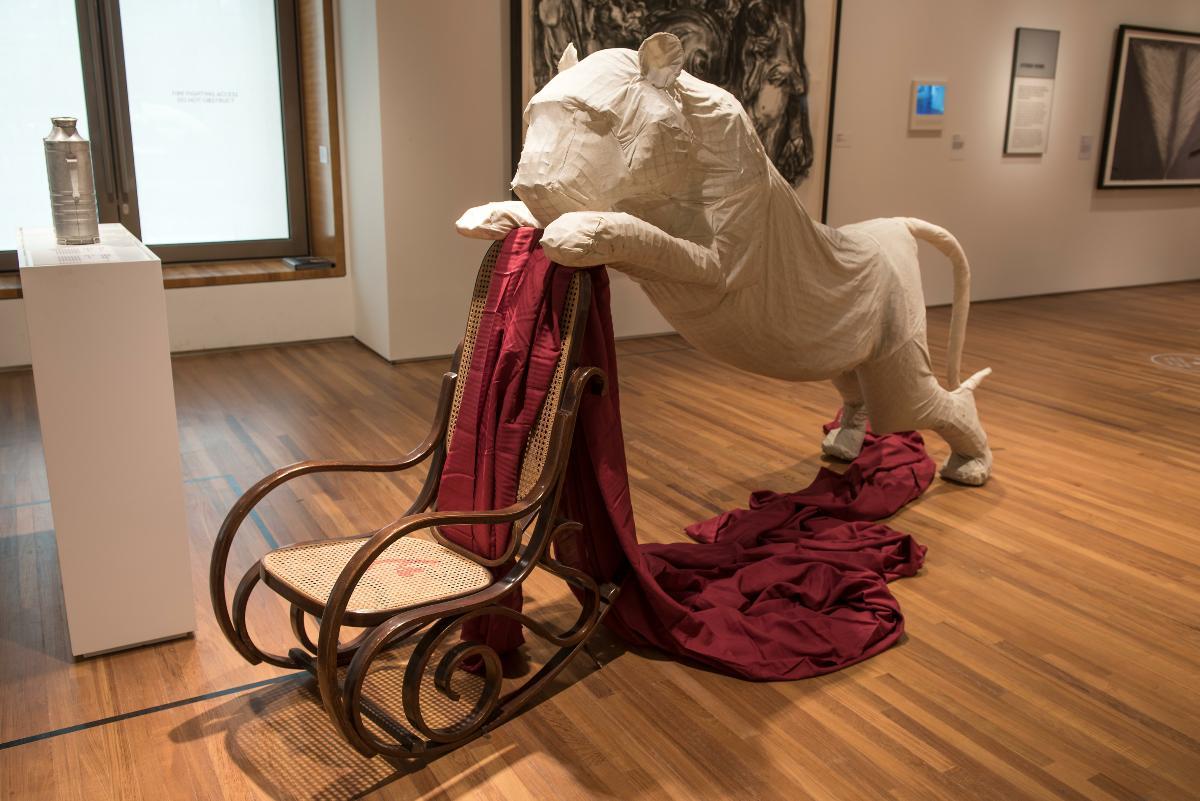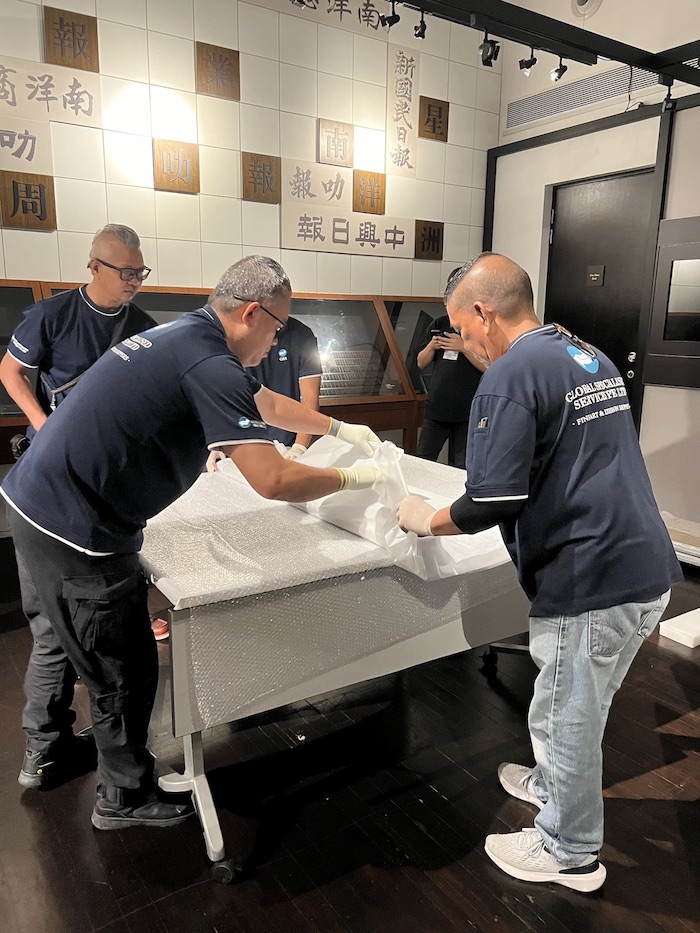Tiger's Whip, Tang Da Wu, Singapore, 1991, mixed media.
Collection of Singapore Art Museum.

Tang Da Wu, born in 1943, is widely regarded as the central figure in the development of 'alternative' art in Singapore. A graduate from Goldsmith College, University of London with a Master of Art, he led a group of younger artists to establish The Artists Village in Singapore in 1988, where performance, installation and painting took place.
Since the late 1990s, Tang has been working on community projects that deal with memory, history as well as environmental issues. In 1999, Tang was awarded the Arts and Culture Prize at the 10th Fukuoka Asian Culture Prize and in 2007, he was one of four artists who represented Singapore at the Venice Biennale.
Tiger's Whip, an installation and performance piece, was first presented to the Singapore public in 1991 in Chinatown with the intention of highlighting the plight of the endangered tigers, which are hunted for their penises as Chinese superstition makes them out to be a powerful aphrodisiac. The work shows the clash of such a belief with the reality of extinction.
This is an extract from "The Singapore Story through 60 objects" written by Kennie Ting, Director, Asian Civilisations Museum and Peranakan Museum & Group Director of Museums, National Heritage Board. This article was first published in Cultural Connections Volume IV 2019 by Culture Academy Singapore.















